The Chinese money plant has gained significant popularity in recent years. Originally from the Yunnan province in China, this plant is admired for its unique appearance and ease of care, making it a favorite among plant enthusiasts and collectors.
The chinese money plant is characterized by its round, pancake shaped leaves that grows on long slender stems. The leaves have a vibrant green color and a smooth, glossy texture which adds to its aesthetic appearance. 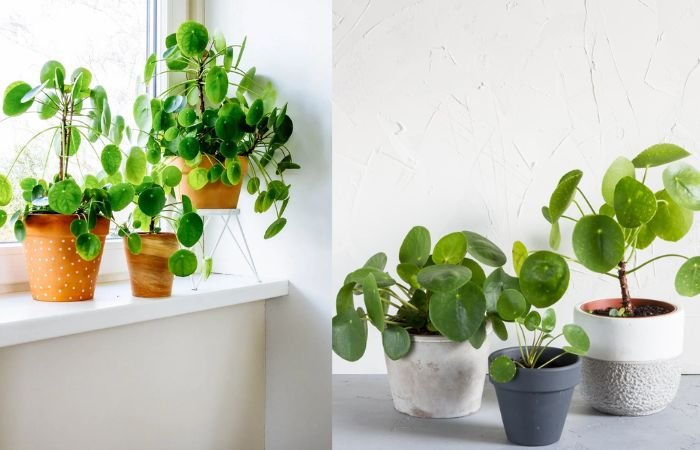
The plant’s overall shape and structure create a visually striking display, making it an excellent choice for decorative purposes in homes, offices, and other indoor spaces.
| Common Name | Pancake plant, Chinese money plant, coin plant, UFO plant, friendship plant |
| Botanical Name | Pilea peperomioides |
| Native Area | China |
| Plant Type | Perennial |
| Mature Size | H- 12, W- 8 TO 10 |
| Soil Type | Well-draining |
| Flower color | White |
Why is it named the Chinese Money Plant?
The Chinese money plant gets its common name due to its association with bringing good luck and prosperity. In Chinese culture, the plant is believed to attract wealth and financial abundance.
Additionally, the round, coin-shaped leaves of the plant are an indication of ancient Chinese currency, further reinforcing the connection to money. As a result, the plant has become widely known as the Chinese money plant or the money plant.
Look more- Plants for outdoor garden
How To Care For Chinese Money Plant
Caring a chinese plant is relatively easy, here are some of the guidelines to ensure its growth and care.
- Light: Place your money plant in a location where it receives symmetrical bright, indirect light of the sun. Avoid direct sunlight as it can scorch the leaves.
- Temperature: The ideal temperature for its growth is between 65-75`F or 18-24`C. It can tolerate slightly more temperature but should be protected from extreme heat.
- Watering: Water your plant regularly but allow the top inch (2.5 cm) of the soil to dry out between waterings. Overwatering can lead to root rot, so it’s important to strike a balance.
- Humidity: Chinese money plants prefer moderate humidity levels. You can increase humidity by misting the leaves with water or placing a tray of water near the plant, but be cautious not to let the plant sit in standing water.
- Soil: Use well-draining soil that allows excess water to flow out. A mix of potting soil, perlite, and peat moss or coco coir works well for Chinese money plants.
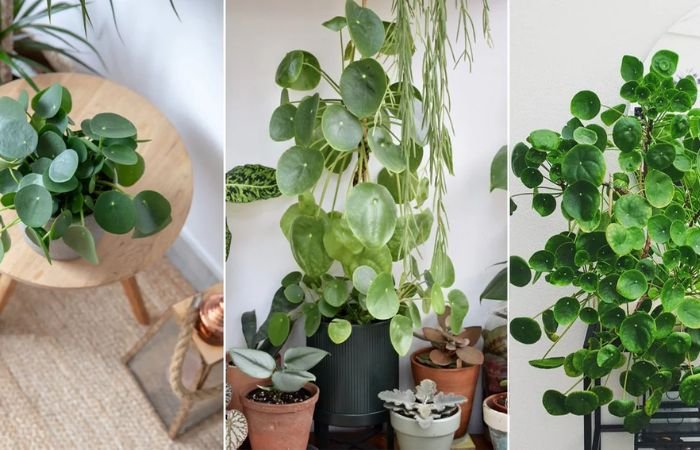
- Fertilizer: Feed your Chinese money plant with a balanced houseplant fertilizer diluted to half the recommended strength. Apply it once a month during the growing season (spring and summer). Avoid fertilizing during winter when the plant’s growth slows down.
- Pruning: Prune your Chinese money plant to maintain its shape and remove any leggy or yellowing leaves. Regular pruning will also help encourage bushier growth.
- Propagation: Chinese money plants are relatively easy to propagate. You can propagate them by carefully separating the small offshoots (pups) that grow around the base of the plant. These can be potted individually in fresh soil. Stem cuttings can also be rooted in water or moist soil.
- Rotation: Rotate the plant occasionally to ensure even growth and prevent it from leaning towards the light source.
- Pest Control: Chinese money plants are generally resistant to pests, but occasionally, they may be susceptible to spider mites or mealybugs. Monitor your plant regularly and take appropriate action if you notice any pests.
Know more- Plants should not be kept at home
Types of Chinese Money Plant
The Chinese money plant is primarily known for its specific species. However, there can be variations in leaf shape and coloration within the species. Here are a few varieties or cultivars you may come across:
- Moon Valley: This variety has deeply textured leaves that resemble the craters of the moon. The leaves often have a darker green color and a more pronounced wrinkled texture, adding to their visual appeal.
- White Splash: This variation showcases leaves with splashes or speckles of white, creating a marbled effect. The white markings contrast against the green background, creating an attractive and distinctive appearance.
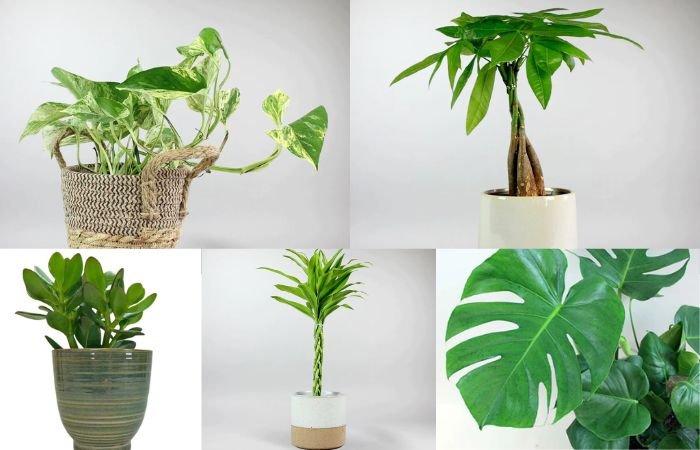
- Red stem: As the name suggests, this cultivar is distinguished by its red or reddish-brown stems, adding a touch of color to the overall plant. The leaves of this variety are typically the same as the standard Chinese money plant.
How To Propagate a Chinese Money Plant
Propagating a chinese plant can be an exciting way to expand your plant collection at home.
Here are some steps you can follow and propagate a chinese money plant:
- Prepare a new pot with well-draining soil and ensure it has drainage holes
- Gently remove the pup from the base of mother plant using a knife
- Plant the pup in the new pot making sure soil is firm
- Water the newly potted pup, ensuring soil is moist but not waterlogged
- Place the pot in a location which receives bright, indirect light
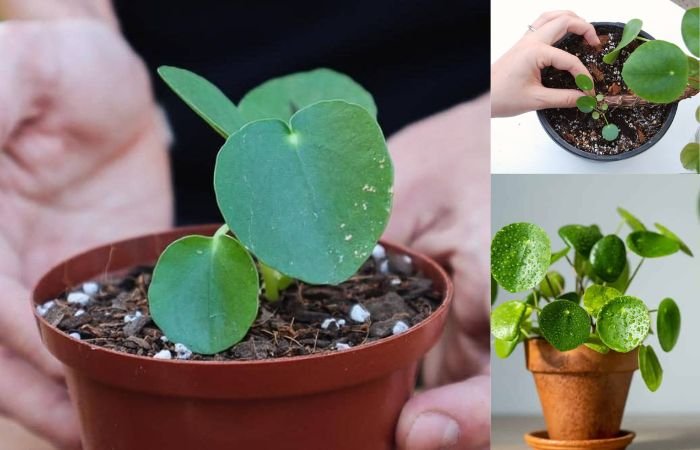
- Water the plant on regular basis and make sure it should be kept in a temperature of around 18-24`C
- Maintain the humidity and use fertilizers if needed
Tips- To maintain indoor plants
Common Problems with Chinese Money Plant
While chinese money plant are easy to care but they still can face some problems, here are some of the problems listed with chinese money plant:
- One of the most common problem is overwatering, which can lead to rot issues
- On the other hand, underwatering can lead to wilt or turn leaves to yellow
- If they don’t receive maximum light then its green leaves will start shedding its color
- Curling leaves can be a sign of low humidity
- Yellowing leaves can indicate overwatering, underwatering, deficiencies or may be pest issue
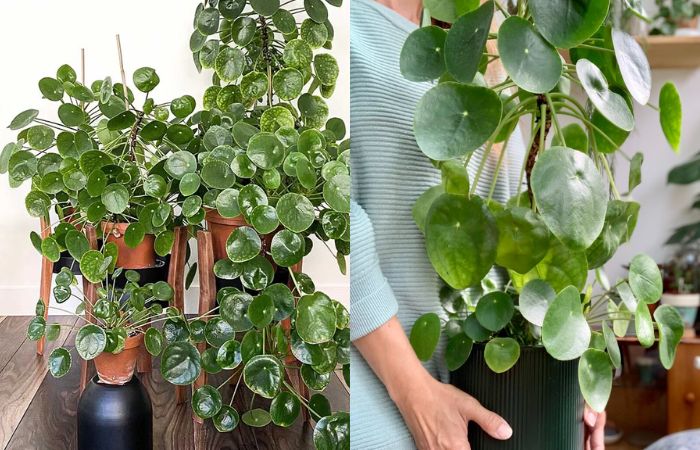
- If your chinese plant becomes leggy or elongated, this is due to insufficient light
- They can occasionally attract spiders or meatbugs.
CONCLUSION
Growing a chinese plant at home can be a rewarding and enjoyable experience. They are known for their low-maintenance nature; the plant’s distinct appearance can add a touch of greenery and charm to any indoor space, making it a popular choice for home decor.
The Chinese money plant holds cultural significance in some regions, believed to bring good luck and prosperity. Its association with wealth and auspiciousness adds an extra layer of symbolism and charm to the plant.
While chinese plants are generally resilient, they can encountered problems such as overwatering, underwatering, insufficient light, leaf curling, yellowing leaves and pest issues but addressing these issues promptly will help you maintain a healthy plant.
Read more- Tulsi plant according to vastu


